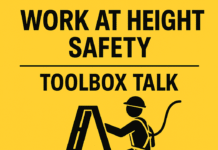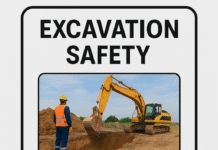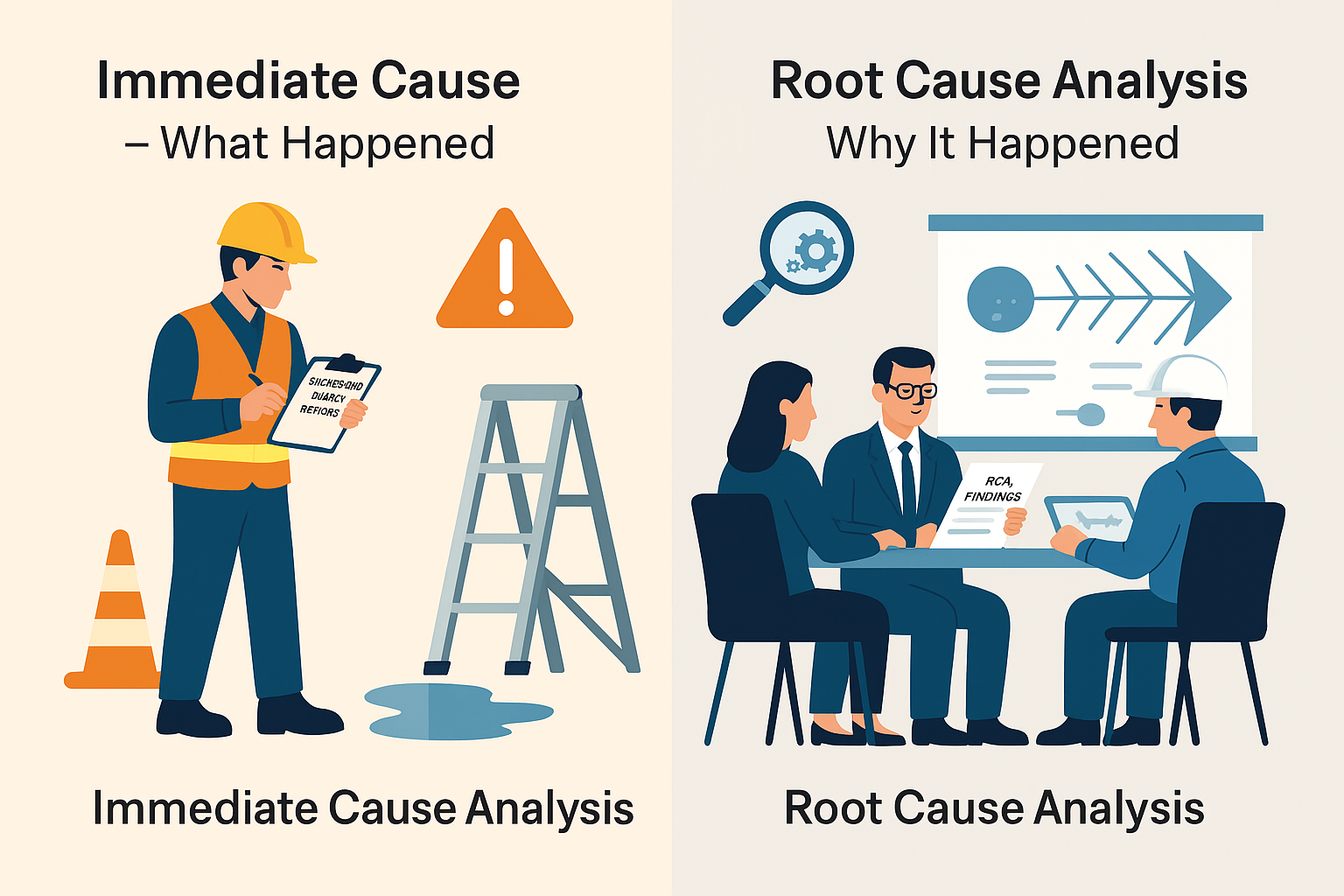
How To Prepare Key Performance Indicators (KPIs) | Download PPT
Key Performance Indicators (KPIs) play a crucial role in ensuring safety within the construction industry. In this article, we’ll delve into the process of preparing KPIs specifically tailored for construction safety, equipping you with the knowledge to effectively monitor and improve safety standards on your construction sites.
Introduction to Key Performance Indicators (KPIs)
Construction projects inherently involve various risks, making safety a top priority. KPIs serve as measurable indicators that allow project managers and stakeholders to gauge the effectiveness of safety measures implemented throughout a construction project. By establishing and monitoring KPIs, construction teams can proactively identify potential hazards and mitigate risks, ultimately fostering a safer working environment.
Understanding Construction Safety KPIs
Construction safety KPIs encompass a range of metrics designed to evaluate different aspects of safety performance on construction sites. These metrics may include but are not limited to, accident rates, near-miss incidents, compliance with safety regulations, and employee training levels. By comprehensively assessing these metrics, construction stakeholders can gain valuable insights into the overall safety culture and identify areas for improvement.
Identifying Relevant Metrics
When preparing KPIs for construction safety, it’s essential to identify metrics that are both relevant and actionable. Factors such as the nature of the project, specific hazards present, and regulatory requirements should be taken into account when selecting KPIs. Commonly used construction safety metrics include lost time injury frequency rate (LTIFR), total recordable incident rate (TRIR), safety training completion rates, and adherence to safety protocols.
Setting SMART Goals
To ensure the effectiveness of construction safety KPIs, it’s crucial to set SMART goals – specific, measurable, achievable, relevant, and time-bound. SMART goals provide a clear framework for evaluating safety performance and driving continuous improvement efforts. For instance, a SMART goal for reducing the LTIFR could be to achieve a 20% decrease in LTIFR within the next six months by implementing additional safety training programs and conducting regular safety audits.
Data Collection and Analysis
Collecting accurate and reliable data is paramount for meaningful KPI analysis. Construction teams can leverage various data collection methods, including incident reporting systems, safety inspections, and employee surveys. Additionally, advancements in technology, such as wearable devices and IoT sensors, offer real-time data monitoring capabilities, enabling proactive safety management. Once data is collected, sophisticated analytical tools can be utilized to identify trends, patterns, and potential areas of concern.
Creating Actionable Insights
Interpreting KPI data is key to deriving actionable insights that drive safety improvements. By analyzing trends and identifying root causes of safety incidents, construction stakeholders can implement targeted interventions to mitigate risks. Whether it involves revising safety protocols, providing additional training, or enhancing hazard controls, actionable insights derived from KPI analysis empower construction teams to proactively address safety issues and prevent future incidents.
Continuous Improvement
Effective construction safety management is an ongoing process that requires continuous evaluation and improvement. Regular review of KPI performance allows construction stakeholders to identify areas where safety initiatives are succeeding and areas where further attention is needed. By fostering a culture of continuous improvement, construction companies can adapt to changing circumstances, implement best practices, and ultimately enhance safety outcomes across all projects.
Developing Key Performance Indicators (KPIs) for construction safety is crucial for ensuring that safety standards are met and maintained on construction sites. Here's a step-by-step guide on how to prepare KPIs for construction safety:- Identify Safety Objectives: Begin by defining the overarching safety objectives for the construction project. These objectives should align with the organization’s safety policies and regulations.
- Review Regulations and Standards: Familiarize yourself with relevant safety regulations and standards applicable to construction sites. This could include regulations from OSHA (Occupational Safety and Health Administration) or other regulatory bodies depending on your location.
- Consult Stakeholders: Involve stakeholders including project managers, safety officers, supervisors, and workers in the process of defining KPIs. Their input can provide valuable insights into the specific safety risks and challenges faced on the construction site.
- Select Relevant KPIs: Choose KPIs that are measurable, relevant, and aligned with the safety objectives and regulations. Some common KPIs for construction safety include:
- Total Recordable Incident Rate (TRIR)
- Lost Time Injury Frequency Rate (LTIFR)
- Near Miss Reporting Rate
- Safety Training Hours
- Compliance with Safety Procedures
- Safety Inspections and Audits
- Hazard Identification and Corrective Actions
- Set Baseline Metrics: Determine the baseline metrics for each selected KPI. This provides a starting point for measuring improvement over time.
- Establish Targets: Set realistic and achievable targets for each KPI based on industry benchmarks, past performance, and organizational goals. Targets should be specific, measurable, attainable, relevant, and time-bound (SMART).
- Implement Data Collection Mechanisms: Implement systems and processes for collecting relevant data to measure the selected KPIs. This could involve using incident reporting forms, safety inspection checklists, employee training records, and other data sources.
- Analyze and Monitor Performance: Regularly analyze the collected data to track performance against the established KPIs. Monitor trends, identify areas of improvement, and take corrective actions as necessary to address safety issues.
- Communicate and Report Results: Communicate safety performance results to all relevant stakeholders on a regular basis. This could include safety meetings, progress reports, and presentations to management.
- Continuous Improvement: Continuously review and refine the KPIs based on evolving safety requirements, feedback from stakeholders, and lessons learned from incidents or near misses. Strive for continuous improvement in construction safety performance.
By following these steps, you can effectively prepare KPIs for construction safety and contribute to creating a safer working environment on construction sites.Here's a sample set of KPIs for construction safety for a hypothetical construction project:- Total Recordable Incident Rate (TRIR):
- Definition: Number of recordable incidents (injuries, illnesses, and fatalities) per 100 full-time workers during a specific period.
- Baseline Metric: 2.5 incidents per 100 workers.
- Target: Reduce TRIR by 10% by the end of the fiscal year.
- Lost Time Injury Frequency Rate (LTIFR):
- Definition: Number of lost time injuries (injuries that result in time away from work) per 100,000 hours worked.
- Baseline Metric: 1.2 lost time injuries per 100,000 hours worked.
- Target: Maintain LTIFR below 1.0 throughout the project duration.
- Near Miss Reporting Rate:
- Definition: Number of reported near misses per month.
- Baseline Metric: 5 near misses reported per month.
- Target: Increase near miss reporting rate by 20% within the next quarter.
- Safety Training Hours:
- Definition: Total hours of safety training provided to workers.
- Baseline Metric: 200 hours of safety training provided per quarter.
- Target: Increase safety training hours by 10% annually.
- Compliance with Safety Procedures:
- Definition: Percentage of safety procedures followed correctly during inspections.
- Baseline Metric: 85% compliance rate.
- Target: Achieve 90% compliance rate by the end of each month.
- Safety Inspections and Audits:
- Definition: Number of safety inspections and audits conducted per month.
- Baseline Metric: 4 inspections and audits conducted per month.
- Target: Increase the frequency of inspections and audits to 6 per month.
- Hazard Identification and Corrective Actions:
- Definition: Number of hazards identified and corrected within a specific timeframe.
- Baseline Metric: 10 hazards identified and corrected per month.
- Target: Increase hazard identification and corrective actions by 15% within the next quarter.
These sample KPIs provide a framework for monitoring and improving construction safety performance. Actual KPIs may vary depending on the nature of the construction project, the size of the workforce, and specific safety risks involved. Regular monitoring, analysis, and action based on these KPIs can help enhance safety outcomes on construction sites.Benefits of Effective KPIs in Construction Safety
Implementing effective KPIs for construction safety offers a multitude of benefits for construction stakeholders. Beyond reducing the likelihood of accidents and injuries, robust safety KPIs contribute to improved risk management, enhanced productivity and efficiency, and overall project success. By investing in safety initiatives and leveraging KPI data to drive informed decision-making, construction companies can create safer work environments, protect their workforce, and deliver high-quality projects that meet or exceed client expectations.
Conclusion
Preparing Key Performance Indicators (KPIs) for construction safety is a vital aspect of proactive safety management within the construction industry. By leveraging relevant metrics, setting SMART goals, and prioritizing continuous improvement, construction stakeholders can foster a culture of safety excellence that enhances project outcomes and protects the well-being of all workers involved.
How To Calculate Risk Assessment | Download PPT
THE FACTORIES ACT 1948 Section 40 (B) Safety Officers | Download PPT
Scaffolding Technical Specification | Download PPT
44 HSE Interview Questions and Sample Answers | Download PDF
PSSR for Safety | Pre-Startup Safety Review (PSSR) | Download PPT
FAQs
- How do I determine which KPIs are most relevant to my construction project?
- Assess the specific hazards and risks associated with your project, consult industry standards and regulations, and consider input from relevant stakeholders to identify the most relevant KPIs.
- What role does technology play in KPI data collection and analysis for construction safety?
- Technology, such as IoT sensors, wearable devices, and data analytics software, enables real-time monitoring of safety metrics, enhances data accuracy, and facilitates proactive safety management.
- How often should construction safety KPIs be reviewed and revised?
- Construction safety KPIs should be reviewed regularly, ideally on a monthly or quarterly basis, to assess performance, identify trends, and make necessary adjustments to safety initiatives.
- What are some common challenges associated with implementing construction safety KPIs?
- Challenges may include resistance to change, lack of resources or expertise, and difficulty in measuring intangible aspects of safety culture. Overcoming these challenges requires strong leadership, effective communication, and a commitment to continuous improvement.
- How can construction companies incentivize adherence to safety KPIs among employees?
- Incentives such as recognition programs, bonuses for achieving safety targets, and opportunities for professional development can motivate employees to prioritize safety and actively contribute to achieving KPI goals.

























i leant somthing new